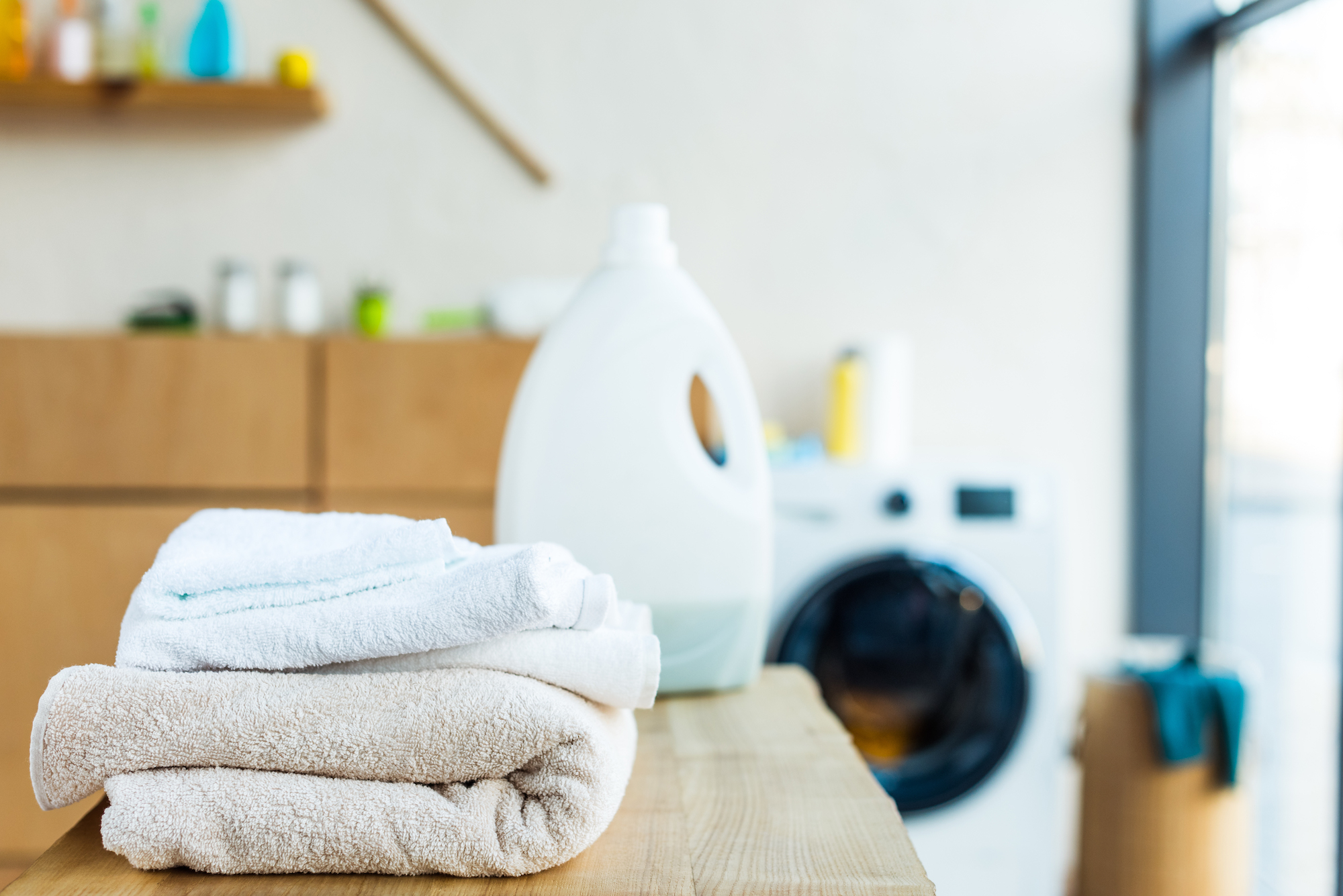
Finding Safe Cleaning Products & Ditching Harmful Household Chemicals
Inside This Post: Dangers of harmful household cleaning products. Household chemicals in cleaning products are detrimental to human health & a list of safe cleaning products.
This post may contain affiliate links. You can see my disclosure policy here.
Finding Safe Household Cleaners & Chemicals in Cleaning Products
Over the last few years, there’s been a noticeable shift in consumer awareness of human health and chemicals found produced in cleaning, personal care and home products. It’s evident from the aisles upon aisles of items touting “green,” “all-natural,” “natural” and “free from toxins” labels that companies have noticed this consumer shift as well.
Unfortunately while companies are jumping on this green and healthy bandwagon, they’re also promoting products that are just as unhealthy as conventional ones. Their desire to capitalize on this movement and quick-sell products, overrides proper product research and development, and ultimately puts chemical-laden items right into consumers hands who think they’re buying something safe.
Walking into a store and trusting that only safe cleaning products are what’s stocked on shelves, is unfortunately, not the fact.
Buzzwords like “non-toxic,” “natural,” and “healthy” used on labels to attract customers, especially in the cleaning space, can be deceiving.
Here’s a the truth about how chemicals in your household cleaning products are regulated.
THEY AREN’T REGULATED AT ALL
There is absolutely no federal regulation and safety standards of household cleaning products, similar to what we see in fragrance and cosmetics.
For a long time, having a clean home was defined by being spotless and how it smelled. Bleach and cleaning products were associated with cleanliness, but if how your home smells drives you purchase, it’s time to realize you may be contaminating your home with invisible toxins you’re not even aware of, to meet a perception of clean.
How we define clean impacts our decision making process, but reading labels on conventional cleaning products will help you debunk those notions and start buying safer choices.
Selecting non-toxic, organic cleaning products will always be safest way to keeping your home free from harmful chemicals and yet often do the job better than conventional cleaning products.
I want to share with you, how to sort through what’s safe, and what’s not, because I’ve been in your shoes and I know how confusing labels can be and time-consuming it can be to research every product you bring into your home.
If You See These on a Product Label; Toss It & Steer Clear
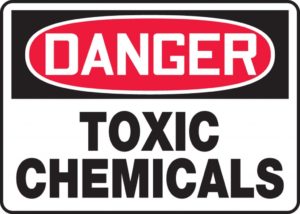
There are several signal words the EPA requires to be on products which tell you what kind of a lethal dose of the product can kill an adult. The words you’ll find are; Danger, Caution and Warning. If you see these on a bottle, toss it immediately, never purchased it and do everything you can to avoid it.
Here’s what the dosing means as far as the EPA labels about toxicity and death:
Danger – For an adult, the lethal dose is a few drops to a teaspoon.
Caution – For an adult, the lethal dose is a teaspoon to a tablespoon.
Warning – For an adult, the lethal dose is one ounce to more than a pint.
These are the most toxic chemicals found on product labels, after pesticides, and shouldn’t have a place in your home.
The chemicals these products contain (synthetic fragrances, solvents, petroleum factions and high VOC levels) are linked to detrimental human health conditions including obesity, reproductive health, neurological effects, birth defects. auto immune disorders, disease and cancer.
One Common Red Flag of Household Cleaning Products
The words, Sanitizer, Sanitizing, Disinfectant and Disinfecting on any marketing material and label should put you on alert right away.
These products which market to sanitize and disinfect your home, typically contains an EPA registered pesticide, designed to kill.
The National Cancer Institute estimates that theres’ been a 28% increase of childhood cancer since these products with sanitizing and disinfecting properties have been introduced to home.
No doubt, we’ve become a germ0phobic society and tend to over-practice hygiene, which is actually harmful to our immune systems and overall health.
The CDC says we shouldn’t use hand sanitizers, sanitizing products and disinfectants in your home because they proliferate the rampant spread of germ superbugs. These smart germs (superbugs) are able to mutate to stronger, smarter germs when you attack them with these cleaning products.
That’s because these cleaning products don’t actually rid your home of germs.
The CDC has done testing that conclusively shows that cleaning with a natural based soap will remove all germs whereas cleaning the same area with a sanitizer or disinfectant, leaves germs on the surface. These bugs that are left on the surface develop resistance to cleaning products and germs in your home.
The use of these types of household cleaning products and hand sanitizers are creating antibiotic resistance and MERSA in hospitals from their use.
Also, most of these products have a dwell time before they work.
This means, that when you spray a counter to clean it, the product needs to sit there for a period of time (average of 10 minutes) before it works. You cannot simply spray and wipe. In those ten minutes, the chemicals are leeching into your home’s air, surfaces and even your skin if touched.
Chemicals such as these, reek havoc on your home’s microbiome, just like your body’s microbiome becomes unbalanced when you take antibiotics.
The solution? To start using a natural cleaning, natural soap or product with surfactant to remove the germs.
If you want a cleaner which sanitizes, you need to find a cleaner that’s been proven to not proliferate the superbug issue such as Branch Basic’s concentrate cleaner.
Look for ethyl alcohol (yep, the same that’s in wine, beer and alcohol) which has been proven to not create the superbug problem because it acts in a different manner and kill germs by a mechanical action, where germs have no way of becoming resistant to it.
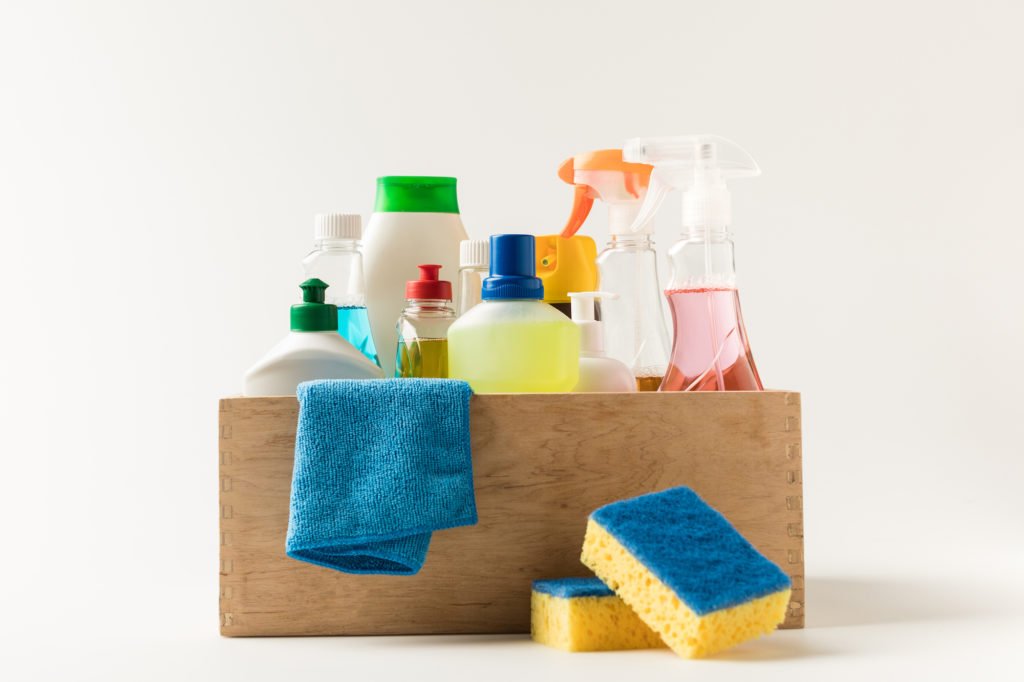
Fragrance is a Toxic Red Flag & Hides Harmful Chemicals
This can be in both convention and non-toxic labeled products.
Fragrance or parfum is these are synthetic chemicals. Fragrance recipe which can contain hundreds of synthetic chemicals which are not tested for safety or disclosed.
They’ve been linked to skin irritation, allergy, irritants, respiratory and endocrine affects, nervous system affects.
It’s estimated that 72% of products labels fragrance contain endocrine disruptors, also known as phthalates. They’ve been linked to diabetes, obesity, hormone disruption, liver and breast cancer and disrupting body and brain development.
Scented products release VOCs when you’re cleaning and immediately affect the air in your home.
Signal words to look for on a label of cleaning products, personal and body products:
- synthetic fragrance
- fragrance
- perfume
- parfum
- parfume
- and ingredients you can’t pronounce
Preservatives in Cleaning Products Do Detrimental Harm to Human Health
Many companies use EPA registered pesticide as preservatives. These types of preservatives are cytotoxic and can kill you.
Preservatives are chemicals added to a product to help prevent decay and spoilage of the product which could render the product un-useable and possibly dangerous..
Here are some the names of preservatives that can cause harm and are commonly found in conventional cleaning products:
-
2-Butoxyethanol is the key ingredient in many window cleaners and gives them their characteristic sweet smell. It belongs in the category of “glycol ethers,” a set of powerful solvents that don’t mess around. Law does not require 2-butoxyethanol to be listed on a product’s label. According to the EPA’s Web site, in addition to causing sore throats when inhaled, at high levels glycol ethers can also contribute to narcosis, pulmonary edema, and severe liver and kidney damage.
- Methylisothiazolinone is associated with lung toxicity, neurotoxicity, and allergic reactions. This one is in a multitude of so-called “natural” products, despite its health risks.To avoid methylisothiazolinone, read product labels and steer clear of products that contain any of the following: Methylisothiazolinone; 3(2H)-Isothiazolone, 2-methyl-; 2-Methyl-3(2H)-isothiazolone; 2-Methyl-2H-isothiazol-3-one; 2-Methyl-4-isothiazolin-3-one.
- Methylchloroisothiazolinone can cause allergic reactions, and skin, eye, and lung irritation. Canada, Japan, and the European Union have all restricted its use. You can avoid methylchloroisothiazolinone by reading product labels for the following ingredients: Methylchloroisothiazolinone; 3(2H)-Isothiazolone, 5-chloro-2-methyl-; Kathon CG 5243; 5-Chloro-2-methyl-4-isothiazolin-3-one; 4-Isothiazolin-3-one, 5-chloro-2-methyl-; 5-Chloro-2-methyl-2H-isothiazol-3-one; 5-chloro-2-methyl-; 4-Isothiazolin-3-one.
- Benzisothiazolinone is notorious as a skin, eye, and lung irritant and it’s also an environmental pollutant that’s toxic to fish. Benzisothiazolinone can be avoided by steering clear of these ingredients: 1,2-Benzisothiazol-3(2H)-One; 1,2-Benzisothiazolin-3-One; 1,2Benzisothiazol3 (2H) One; Proxel XL 2Benzisothiazolin-3-One; Proxel PL.
- Butylated compounds (butylated hydroxytoulene (BHA) and butylated hydroxylanisole (BHT)) are toxic chemicals mimic the behavior of estrogen in the body, affect thyroid hormone levels, adversely affect the quality of sperm, and cause behavioral problems in children. They’re also classified by the International Agency for Research on Cancer as likely human carcinogens.Read ingredient labels on products like lip glosses, lotions, and other personal care items to avoid BHA and BHT. These ingredients may be listed as butylated hydroxyanisole, BHA, butylated hydroxytoulene, or BHT.
- Phenoxyethanol exposure has been associated with allergic reactions, neurotoxicity, and skin, eye, and lung irritation. Japan and the European Union have both recognized the toxicity of phenoxyethanol.Read ingredient labels to avoid this ingredient. Phenoxyethanol may be listed under any of the following names: phenoxyethanol; 2-phenoxyethanol, euxyl k 400; 2-hydroxyethyl phenyl ether; 2-phenoxy-ethanol; 1-hydroxy-2-phenoxyethane; phe; 2-phenoxyethyl alcohol; ethanol, 2-phenoxy-; ethanol, 2phenoxy; ethylene glycol, monophenyl ether; phenoxytol; 2-phenoxyethanol.
Synthetic preservatives have been determined by dermatologists to be the number one cause of contact dermatitis.
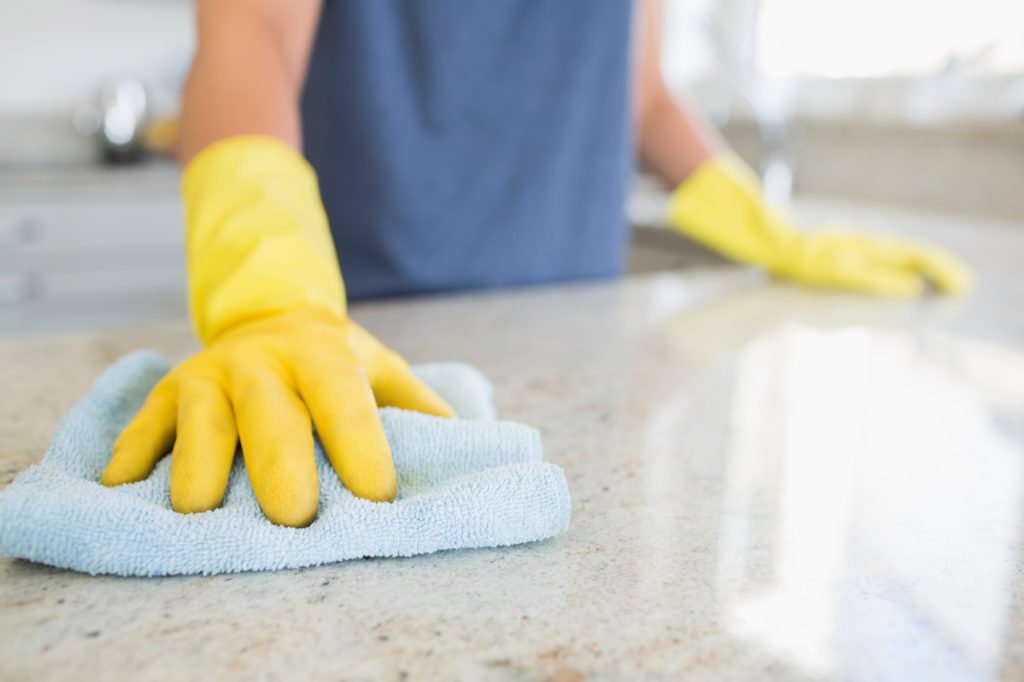
Beware of Greenwashing Claims
If a cleaning product at your supermarket proclaims itself “green,” “natural” or “biodegradable,” that doesn’t necessarily mean it’s non-toxic.
In 2010 the environmental consulting firm TerraChoice Group, produced a report called “The Sins of Greenwashing.” In it the group found more than 95 percent of so-called “green consumer products” had committed at least one “greenwashing sin,” such as claiming an environmental statement that while it may be truthful, is unimportant.
A product for example, may state that it’s “CFC-free,” but CFCs are banned by law and are not allowed in any product.
Donna Kasuska of ChemConscious offers this advice: “When gauging ecological claims, look for specifics. ‘Biodegradable in three to five days’ holds more meaning than ‘biodegradable,’ as most substances will eventually break down with enough time.”
Checking Household Cleaning Products for Unsafe Chemicals & Practices
Here’s what you need to look for to determine the safety of the cleaning products you bring int your home:
- Fragrance free and unscented (all ingredients are classified as fragrance free and nothing is added to mask the natural smell of the formula to make it unscented.)
- You need to find out what the oils (even essential oils) are processed with.
- Choose an organic essential oil, that’s been wildcrafted and extracted without solvents.
- Don’t use them on a day when it’s a high ozone alert which reacts to the chemicals in the cleaning products.
- Check safety ratings and ingredient lists through either the EWG or the Think Dirty App
My Favorite Safe Household Cleaner
The truth is, there aren’t many conventional safe and chemical free cleaning products readily available on your store shelves.
Even at Whole Food and Trader Joes, you still have to be very careful about the cleaning products you bring into your home.
Greenwashing marketing labels such as “all natural” and “toxin free” may sound safe, but you still have to read labels and search for materials lists available online for those that aren’t disclosed (and often aren’t).
I have tried many “green” products, sometimes not finding they worked well and sometimes finding after purchase, there were chemicals in the formulas not disclosed but I had found after the fact.
I’m going to be a lifelong fan of Branch Basics, and even travel with their foaming wash to use to wash my hands when I’m not at home, wash my face, hair and even as shampoo to bathe my dogs.
They have a multi-purpose concentrated cleaner that’s plant and mineral based, has zero harmful chemicals, fragrance free, is safe, affordable and biodegradable. You mix the concentrate for whatever you need – kitchen, bathroom, floors, stains, laundry, carpet, and glass.
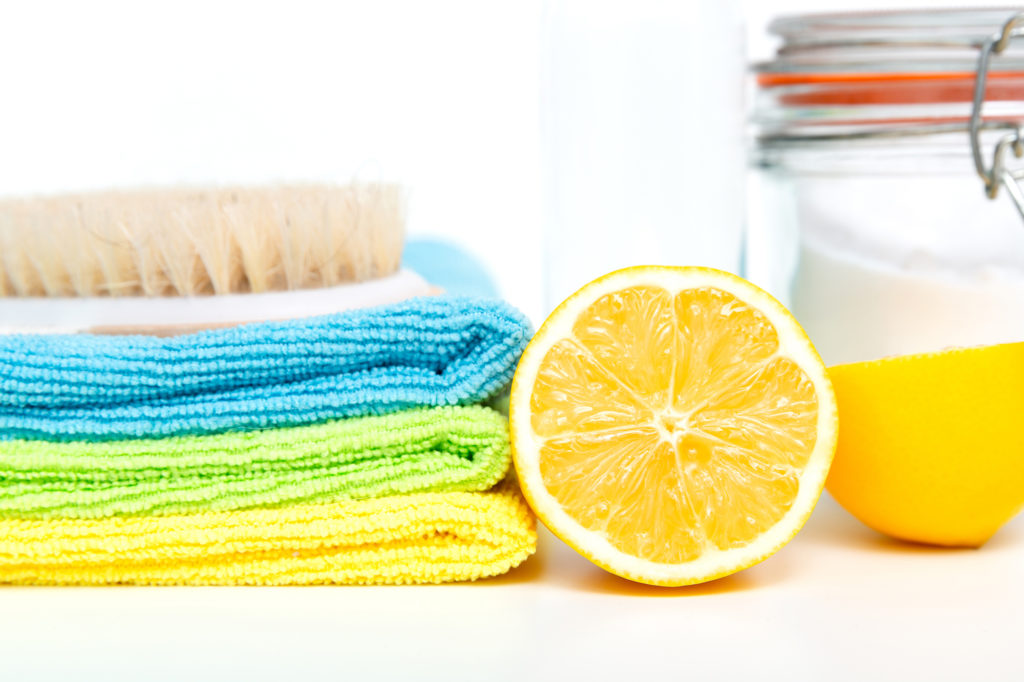
7 Nontoxic and Safe Household Cleaners
These are my favorite pre-made cleaner concentrates that are not only affordable, but work really well!
- Branch Basics – A completely safe, non-toxic, fragrance free, and works on practically everything!
- Dr. Bronner Sal Suds Concentrate– A coconut-based natural formula that cleans very well. Add one drop to two quarts of water and clean 3 year old stains from your carpet. A teaspoon mixed into a quart of water will clean most household surfaces in the kitchen, bath and throughout the home.
- Dr. Bronner’s Liquid Castile Soap Concentrate: There are so many used for Dr. Bronner’s castile soap including personal care, house cleaning, foaming hand soap and more. No synthetic detergents or preservatives.
- Bon Ami Cleaning Powder– A natural powder-based cleaner and scouring powder that works great on tough stains and grime on surfaces like the bathtub, bottom of the shower and dirty toilets.
- Laundry Soap – You can use Branch Basics for laundry (it works exceptionally well for so many things) but more chemical free and safe options include BioKlean Liquid Laundry Soap or Ecover Zero.
To gain a full understanding of what harsh toxins are lurking in your home and what happens when you breathe, eat, touch or smell them, Download Your Free Starter Guide to Environmental Toxins Hiding in Your Home